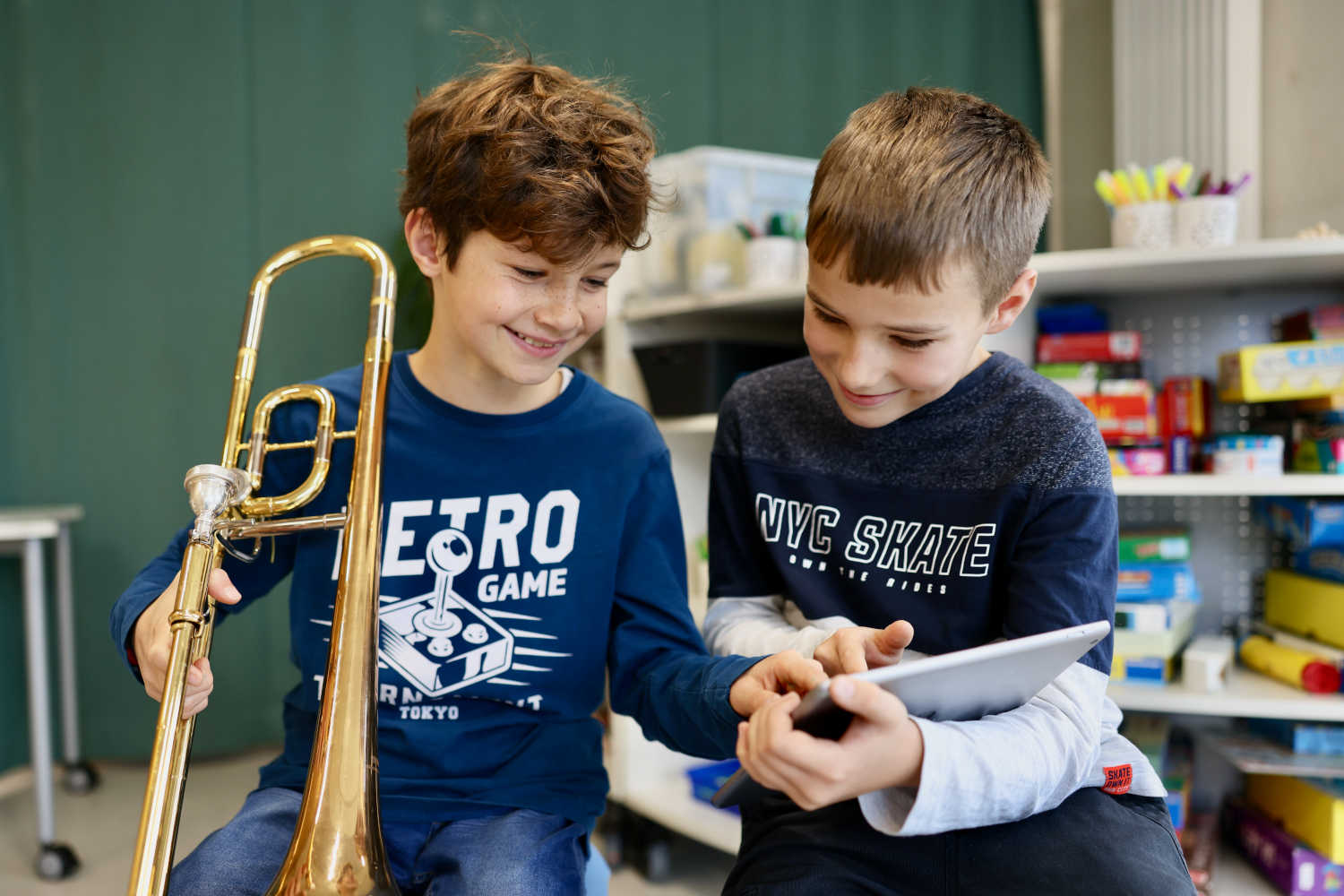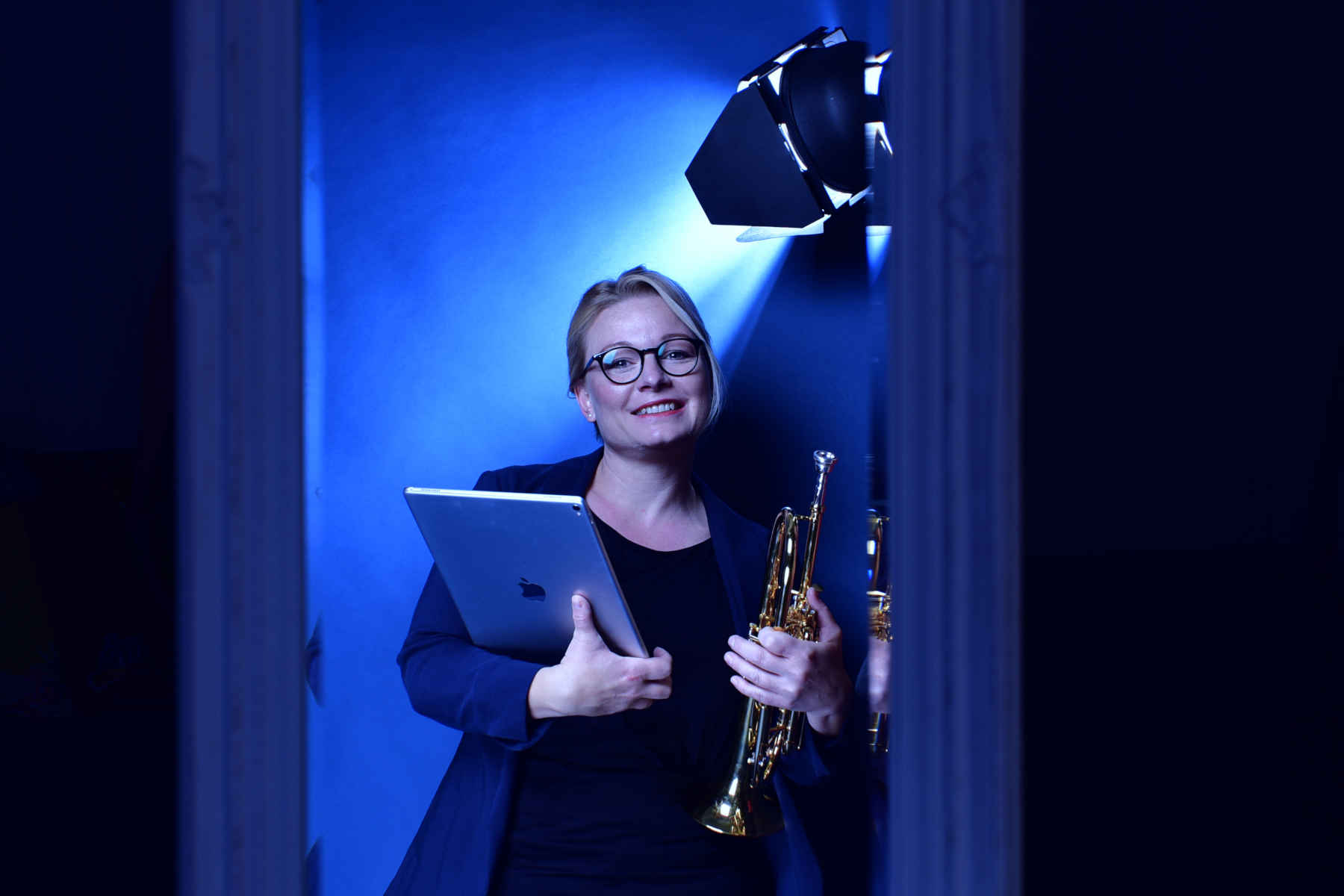by Kristin Thielemann (01.07.2022)
English Translation by Edward Lee (21.07.2022)
Do your students find repeating scales, exercises, or tricky phrases monotonous? Then why not try a Loop-App! These easy-to-use helpers create fascinating pieces of music from unpopular exercises in no time at all, which will delight beginners and advanced users alike!

I am convinced that within a few years, making music with loops will have a permanent place in our teaching arsenal. The advantages are obvious, alongside the constant repetition of beautiful music, the desire to be creative, to invent and to improvise is awakened, and continues to grow the more you loop. I also notice again and again how even beginners get into the flow when using loop apps, such as Loopy HD, and the patterns they train with their pieces are very easily consolidated.
My 12-year-old trumpet student Felix worked on the D major scale and all its pitfalls using a Loop-App, and in less than 20 minutes, beaming from ear to ear, he showed that he could work very confidently in this key.
But Felix could just as easily be a saxophone, violin or piano student! We can transfer the knowledge of Loop-Apps to making music with any instrument or voice. It is important that we know and understand the basic principle of Loop-Apps, and dare to experiment.
With a Loop-App, a certain number of bars can be recorded, which repeat continuously, immediately after recording, hence the name loop. With Felix, I set the app to four bars. All sections or loops that were recorded were now four bars long. I also chose a tempo that he could handle easily. If desired, the app not only plays a metronome, but also offers a drum accompaniment, so it sounds a lot more like a band concert than a simple exercise.
Felix heard the drumbeat through his headphones, and played the four bars that I developed for him from his scale. They look like this:

Recording stopped automatically after four bars. Immediately afterwards, the student heard how the drums and loop 1, which he played, were repeated, or “looped”. Now he played loop 2, another voice I developed with the same number of bars from the notes of the D major scale, which matches very well with the previous bars or loop.
Finding well matching melodies doesn't have to be difficult. It's very easy if, for example, you start loop 1 on the tonic and start the second loop a third higher or lower. In this example, I chose the same rhythm and a similar melodic progression for loop 2, but starting on the mediant.
You are now free to create additional voices as you please. I continued to develop loops 3 and 4 together with Felix (see music example). All four loops were chosen so that they could also be swung, to give the music a little more groove. When working with Loop-Apps, it makes sense, if possible, to start with the bass line, to lay the harmonic foundations. After that, I would always suggest recording the part that is easiest for the student next. If the first loop is boring, the student will not want to succeed, and working with Loop-Apps will be quickly put aside. When the first two or three loops have been recorded and are running simultaneously, I am happy to work with the student to develop another, slightly more complex voice, to give them a bit of a challenge. Incidentally, in the Loop-App, it is very easy to change the tempo, to make it slower or faster. Therefore, if we were too “optimistic” developing our loops, we can slow down the tempo a little.
Another possibility is improvising freely along to the running loops, using certain “melodic snippets” that the student invents themself, or suggestions that I have prepared in advance or create ad hoc. There is also the option to change the volume of individual loops, or switch them off completely, to play chosen loops along live to the running loops.

Kristin Thielemann (Homepage: https://www.vollmotiviert.com/) Kristin Thielemann studied orchestral music, trumpet and music education at the Lübeck University of Music and was a scholarship holder of the Richard Wagner Foundation and the Munich Philharmonic. During her studies she was already under contract as a trumpeter in the orchestra of the Deutsche Oper Berlin.
Starting in 2009, she has been regularly publishing articles in professional journals for Schott Music, and also produces her own Sheet Music & Tips for use in education. ...
I use the Loopy HD App for my lessons. Although it is a paid app, it is the market leader and the undisputed star among Loop-Apps. There are however no in-app purchases, this is very important, so that the students’ parents have transparency about the costs right from the start, and do not get a shock if their child unintentionally takes out a paid subscription. Another plus for Loopy HD for me is that it runs on both Apple and Android devices, and I only have to get used to the functions of a single app.
Another advantage is that it is also possible to use the Loop-App without a tablet. Even a mobile phone with a small display is enough to get going. It is however important that you use headphones when working with Loop-Apps, otherwise the previously recorded loops will be recorded over and over again, and you will not get a clear recording to loop.
As a little bonus, I've written some short pieces you can use when testing a loop app:
Canons also work very well. Try Pachelbel's Canon, it can be looped wonderfully, or if you are after something a little easier, the children's song “I like the flowers”! From classical music, chaconnes or works with repetitive harmonies work best.
In my publication Digital jetzt! Wie Sie Ihren Unterricht medial bereichern you will find more ideas and scores for working with Loop-Apps, but also for other topics such as gamification, new forms of teaching, and cool digital media projects that fascinate students and enrich our lessons.
So far there aren’t very many sheet music editions or scores that deal exclusively with loop music. Those that do exist you can find here:
I hope that you too will discover the power that Loop-Apps unleash when you use them in your lessons, and that your students will be enthusiastic and throw themselves into looping scales, etudes and exercises with bright eyes and bushy tails.

Kristin Thielemann studied orchestral music, trumpet and music education at the Lübeck University of Music and was a scholarship holder of the Richard Wagner Foundation and the Munich Philharmonic. During her studies she was already under contract as a trumpeter in the orchestra of the Deutsche Oper Berlin.
She has been working for the Schott Music publishing house since 2009, and has written many articles in specialist journals such as üben & musizieren but also publishes her own Sheet music for use in music education.
Her guide Jedes Kind ist musikalisch (Schott Music 2016) was translated into Chinese and Voll motiviert! Erfolgsrezepte für Ihren Unterricht (Schott Music 2019) is one of the best selling German books about practical music education. Her newest works are: Ganz schön wild! Besondere Schüler entspannt unterrichten (Schott Music 2021) und Digital jetzt! Wie Sie Ihren Unterricht medial bereichern (Schott Music 2022).
She is a highly regarded guest lecturer at colleges, universities and music schools; organises advanced training courses for music teachers and lectures for parents and moderates the podcast „Voll motiviert“.